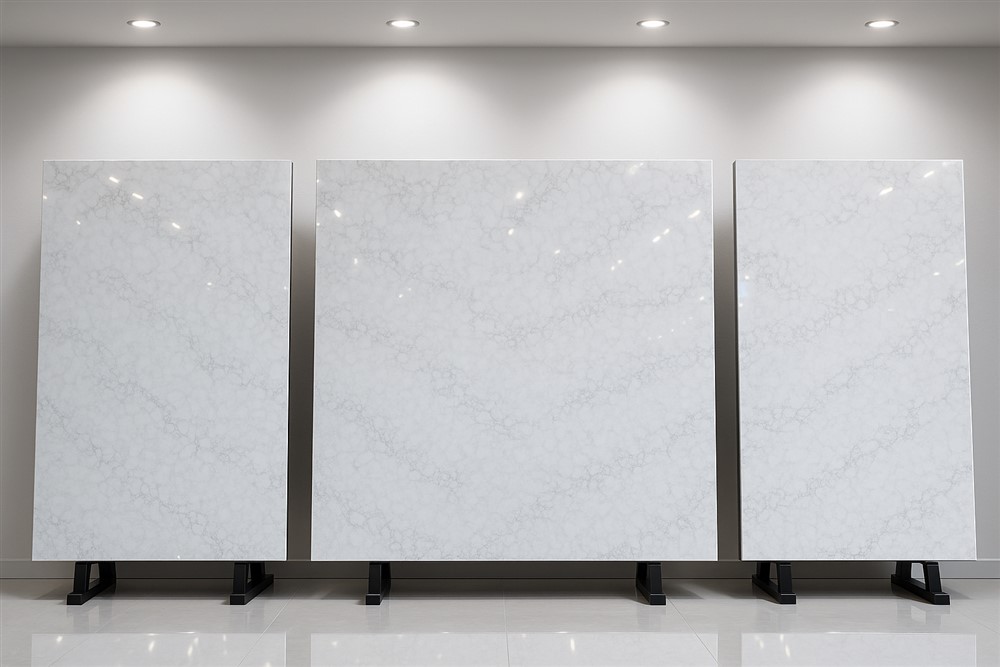Italian marble adds timeless elegance to any space, but its porous surface means spills can leave stains if not addressed quickly. At Ace Marble & Granites, we help homeowners restore the natural beauty of Italian marble with safe, proven methods. Below is a clear, step-by-step guide to removing common stains while protecting the stone.
Understanding Italian Marble Stains
Italian marble is a porous metamorphic stone, so liquids can seep into its pores and cause staining.
- Stains vary by type: organic (coffee, tea, wine), oil-based (grease, makeup), rust, ink, paint, and more.
- What influences staining: stain type, how long the liquid stayed on the surface, whether the marble has been sealed, and exposure to acids.
- Important note: Avoid acidic cleaners (like lemon juice or vinegar) on marble, as they can etch the surface. Always test cleaning methods in a small, hidden area first.
Also Read How to Choose the Best Marble Shop
General Cleaning Before Stain Removal
- Blot spills instantly with a soft cloth or paper towel. Do not wipe, which can push liquid deeper.
- Rinse the area with water and dry thoroughly after cleaning.
- Use a pH-neutral, marble-safe cleaner. Ignore abrasive pads that could scratch the surface.
- Test any stain-removal method in a discreet area first.
Stain-Specific Methods
Organic stains (coffee, tea, wine, fruit juice, milk)
- Use a poultice made from 3% hydrogen peroxide and a gentle absorbent powder (baking soda or diatomaceous earth).
- Create a thick paste (peanut butter-like consistency) and spread it over the stain, extending beyond the area by about half an inch.
- Cover with plastic wrap to keep the poultice moist and let it sit for 24 to 48 hours.
- Remove the poultice, rinse with water, and dry. If needed, repeat once more.
- After removing the stain, consider sealing the area to help prevent future issues.
Also Read Marble vs Vitrified Which is the Best Flooring for Your Home
Oil-based stains (grease, cooking oil, makeup, heavy foods)
- Use a poultice made with a mild solvent suitable for marble (such as acetone or a stone-safe mineral spirit) mixed with an absorbent powder.
- Apply over and beyond the stain, cover with plastic wrap, and let sit for 24 to 48 hours.
- Lift the poultice, rinse, and dry. Repeat if necessary.
Also Read Types of Marble Flooring for Your Home
Rust stains
- Start with a marble-safe poultice (often hydrogen peroxide with an absorbent powder) to draw iron out of the stone.
- Let it dry completely, then remove the dried poultice, rinse, and dry.
- If the stain persists, consider a rust-removal product labeled for marble/stone and follow the instructions. Do not use harsh acids or bleach on marble.
- When in doubt, consult a professional for rust-related staining.
Ink or dye stains
- Lightly dab with isopropyl alcohol (do not saturate the stone). If the stain loosens, proceed with a poultice as described for organic stains.
- Rinse and dry after treatment. Repeat if needed, testing first in a hidden area.
Paint or dye stains
- For water-based paints, you can try a mild solvent like mineral spirits sparingly, followed by a poultice after the solvent dries.
- For stubborn spots, seek professional guidance to avoid etching or dulling the surface.
Using Poultices: How to Make and Apply
- Choose a powder absorbent: baking soda, diatomaceous earth, or talc.
- Mix with an activator appropriate for the stain type (hydrogen peroxide for organics; acetone or mineral spirits for oils).
- Aim for a thick, spreadable paste similar to peanut butter.
- Apply 1/4 inch to 1/2 inch thick over and beyond the stain.
- Cover with plastic wrap and secure edges to keep moisture in. Leave for 24 to 48 hours.
- Remove the dried poultice, rinse, and dry completely. Inspect the area and repeat if necessary.
Sealing, Polishing, and Post-Clean Care
- After removing a stain, seal the marble with a penetrating sealer designed for marble surfaces. Follow the manufacturer’s instructions.
- Wipe up spills promptly after sealing; newly sealed surfaces can absorb liquids for a short period.
- A light maintenance polish with a marble-safe product can help restore luster after stain removal.
Maintenance Tips to Prevent Stains
- Seal Italian marble periodically (frequency depends on usage and sealer type).
- Wipe up spills immediately; use coasters and mats under acidic or pigmented products.
- Use pH-neutral cleaners designed for marble; avoid acidic or abrasive cleaners.
- Place trivets under hot pots and avoid dragging heavy objects across the surface.
- Clean spills as soon as they occur to reduce absorption time.
Also Read Best Marble for Bathrooms
Ace Marble & Granites can assess your Italian marble and recommend a tailored stain-removal plan, along with sealing and maintenance steps to keep your stone looking its best for years to come.
Frequently Asked Questions (FAQ)
Can I use vinegar or lemon juice on Italian marble?
- No. Acids can etch marble and worsen stains. Use only pH-neutral cleaners and marble-safe products.
What should I do first if I spill something on Italian marble?
- Blot immediately to soak up the spill, then clean the area with a neutral, marble-safe cleaner. If a stain appears, follow a poultice method appropriate for the spill type.
How long does stain removal take?
- Most organic and oil-based stains respond within 24 to 48 hours with a properly applied poultice. Some stubborn stains may require more time or professional treatment.
Should I seal Italian marble after stain removal?
- Yes. Sealing protects porous marble from future staining and makes maintenance easier. Ace Marble & Granites can recommend the right sealer for your stone type and usage.
When should I call a professional?
- If stains are deep, cover a large area, involve valuable or historic marble, or you’re unsure about any cleaning product, contact Ace Marble & Granites for expert assessment and safe restoration options.
For expert stain removal, sealing, and ongoing marble care, trust Ace Marble & Granites. Contact us today to schedule a consultation or learn more about our maintenance services.
Also Read Top Luxurious Marbles of the World





